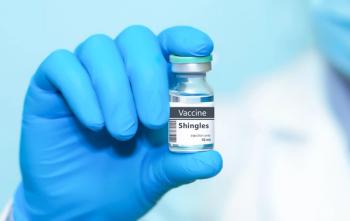
Want more proof that shingles vaccination is effective? A Scottish study provides it
Key Takeaways
- Shingles vaccination reduces hospitalization risk by 74% in fully vaccinated individuals, with a 21% decrease in hospitalizations post-vaccination program implementation.
- Socioeconomic factors significantly impact shingles hospitalizations, with deprived areas showing a 47% higher hospitalization likelihood.
Scots ages 70-79 were 74% less likely to be hospitalized for shingles-related reasons if they were vaccinated against the disease, researchers report
A study conducted in Scotland confirmed what other research has shown: Getting vaccinated against shingles reduces the risk of getting hospitalized for the condition.
Lead and corresponding author Ariadni Kouzeli, M.Sc., an epidemiologist at
Other findings from the study showed that fully vaccinated individuals were 74% less likely to be hospitalized for reasons related to shingles and that hospitalizations related to shingles decreased by 21% after a program to vaccinate people ages 70-79 was implemented in Scotland on Sept. 1, 2013. The year before, the rate of hospitalization from shingles in that age group was 34.1 per 100,000 population. In 2023, the last year included in the study, it was down to 23 per 100,000.
Shingles is the result of latent varicella-zoster infection becoming active. That reactivation occurs when the immune system is suppressed or diminished in some way. With age, the immune system weakens, so shingles becomes more likely. The classic shingles symptom is a vesicular rash that can be painful. People are admitted to the hospital for shingles for a variety of reasons, including pain and if the eye or face is involved.
The U.K. shingles vaccination program used Zostavax, the live attenuated vaccine. Shingrix, approved by the FDA in 2017 and the European Medicines Agency in 2018, is a nonlive recombinant vaccine that contains a protein (glycoprotein 178 E) from the varicella-zoster virus. It is more effective at preventing shingles than Zostavax, and U.K. officials replaced Zostavax with Shingrix in 2023. Zostavax stopped being available in the U.S. in 2020.
Kouzeli and the other researchers used a variety of the databases to conduct their study, including one that identified people who were eligible for vaccination and another that provided information at the individual level. The Scottish Morbidity Record 01 provided information on hospital admissions and patient demographics.
The researchers sifted through the data to identify 3,418 cases of shingles-related hospital stays between Jan. 1, 2000, and Dec. 31, 2023, among the 70-79 age group. Their results show a gradual decrease of shingles-related hospitalizations that pitched downward once the vaccination program started. The incidence rate of hospitalizations in the post-vaccination period was 21% lower than in the prevaccination period.
As other researchers have discovered, Kouzeli and this research team found that women were more likely to be hospitalized for shingles than men; in this study, the women were 20% more likely to be hospitalized. They also found that comorbidities increased the chances of shingles-related hospitalization.
A similar study of shingles-related hospitalizations in England done after the rollout of the vaccination program showed less protection from vaccination than this Scottish study: 49% reduction in shingles-related hospitalizations vs. 74% in Scotland. Kouzeli and co-authors said the difference might be “milder cases not presenting to secondary care as well as behavior changes in accessing health and social care over time.” They note that approximately 1% to 4% of shingles cases result in hospitalization and that a wider look at other sorts of data besides hospitalization will be needed to get a fuller picture of cost-effectiveness and vaccine effectiveness.
Newsletter
Get the latest industry news, event updates, and more from Managed healthcare Executive.




















































